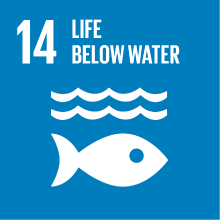ECOLOGY
- Academic year
- 2024/2025 Syllabus of previous years
- Official course title
- ECOLOGIA
- Course code
- CT0636 (AF:466596 AR:254952)
- Teaching language
- Italian
- Modality
- On campus classes
- ECTS credits
- 6 out of 12 of CHEMISTRY AND ECOLOGY FOR ENVIRONMENTAL ENGINEERING
- Degree level
- Bachelor's Degree Programme
- Academic Discipline
- BIO/07
- Period
- 2nd Semester
- Course year
- 2
- Where
- VENEZIA
- Moodle
- Go to Moodle page
Contribution of the course to the overall degree programme goals
Expected learning outcomes
1) Knowledge and comprehension
Knowledge of the terminology and of the main concepts of dynamic system theory. In line with the learning objectives of the programme, this knowledge will enable students to characterize and model the time series of environmental, economic and energetic data, thus providing a back ground for science-based policy making and management actions.
Understanding the relevance of the systemic approach for the investigation of ecosystem dynamics and the prediction of their evolution.
2) Capacity of applying knowledge and comprehension
To be able to apply dynamic system theory in case studies concerning: 1) the modelling of the effects of pollutant loads on ecosystems, with focus on acquatic ones. 2) the management of renewable resources under different exploitation regimes.
To be able to plan management actions, aimed at mitigating the impacts of local and global antropic pressures.
3) Assessment capacity
To be able to assess the environmental benefits brought about by the implementation of alternative scenarios of management actions, such as wildlife restoking, reduction of the loads of pollutants and nutrients, limitation of the exploitation of alieutic resources .
Pre-requirements
Contents
2) Overview of the main environmental directives for the protection of the environment, with focus on acquatic ecosystems: Water Framework Directive, Marine Strategy Framework Directive, Maritime Spatial Planning. Relevance of the biological quality elements for the definition of the Good Environmental Status. Systemic approach: state variable and forcings.
3) Ordinary Differential Equations (ODE). Order of an ODE. 1st order ODE. Initial value problem. Existence and uniqueness theorem. Particular and general solution. Autonomous equations: stationary points and qualitative asymptotic analysis. General solution of a 1st order separable ODE. First order linear ODE. General solution of a homogeneous linear ODE. Solution of non-homogeneous linear ODE: 1) constant forcing; 2) the variation of constant method. Solution of a linear first order ODE for three time dependent forcing functions: linear , periodic , exponential. Linear combination of forcings: the superposition principle.
Applications – separable ODE
Radioactive decay and radionuclide half-life.
Penetration of light in a water body.
Micropollutant contamination: half-life of pollutants in environmental media.
Population dynamics: Malthus equation, the logistic equation.
Applications: linear ODE
Modelling the dynamics of a pollutant in a waterbody. Input-output relationship. Inverse problem and its relevance for the implementation of the environmental legislation.
Modelling the individual growth of aquatic organisms.
Modelling organic micropollutant bioaccumulation in aquatic organisms.
4) 1D Dynamic systems. State variables. Definition of a dynamic system. 1D autonomous systems. Direction field and phase portrait of autonomous equation. Orbits and trajectories. Phase portraits: stationary points and their stability. Local stability analysis.
Applications – 1D dynamic systems
Renewable resources. Open access resources. Management policies: controlling quotes and efforts. Example: the logistic model revisited.
5) 2D dynamic systems. State vector and state space. Autonomous 2D systems. Vector field. Existence and uniqueness Theorem in 2D. 2D linear systems. Particular solutions of a 2D linear dynamic system. General solution. Properties of the general solution. Trajectories and orbits for real eigenvalues. Numerical examples. Numerical solution of dynamic systems using "R" programming environment. Constructing phase portraits using numerical solutions. Classification of orbits of 2D systems: typical phase portraits for complex eigenvalues. Periodic orbits. Summing up: classification of orbits of linear systems.
Applications: 2D linear systems
The Streeter-Phelps model for simulating the dynamic of Dissolved Oxygen in a waterbody.
Multimedia environmental models for predicting the contamination in several abiotic compartment.
Applications: 2D non linear systems
Interactions among population in ecosystems. Predator-prey interactions. The Lotka-Volterra model. Stability of an equilibrium point. Stability analysis of 2D linear systems. Local stability analysis of non-linear systems. Stability analysis of the Lotka-Volterra model. More complex dynamics: predator functional response Holling I,and II. Emerging of periodical oscillation in predator-prey systems.
6) Guidelines for model building. Steps in model building: identification of model structure, a priori parameter estimation, calibration, validation, assessment of model performance: Goodness of Fit (GoF) indices and graphical methods.
Referral texts
Assessment methods
Type of exam
Teaching methods
2030 Agenda for Sustainable Development Goals
This subject deals with topics related to the macro-area "Natural capital and environmental quality" and contributes to the achievement of one or more goals of U. N. Agenda for Sustainable Development



